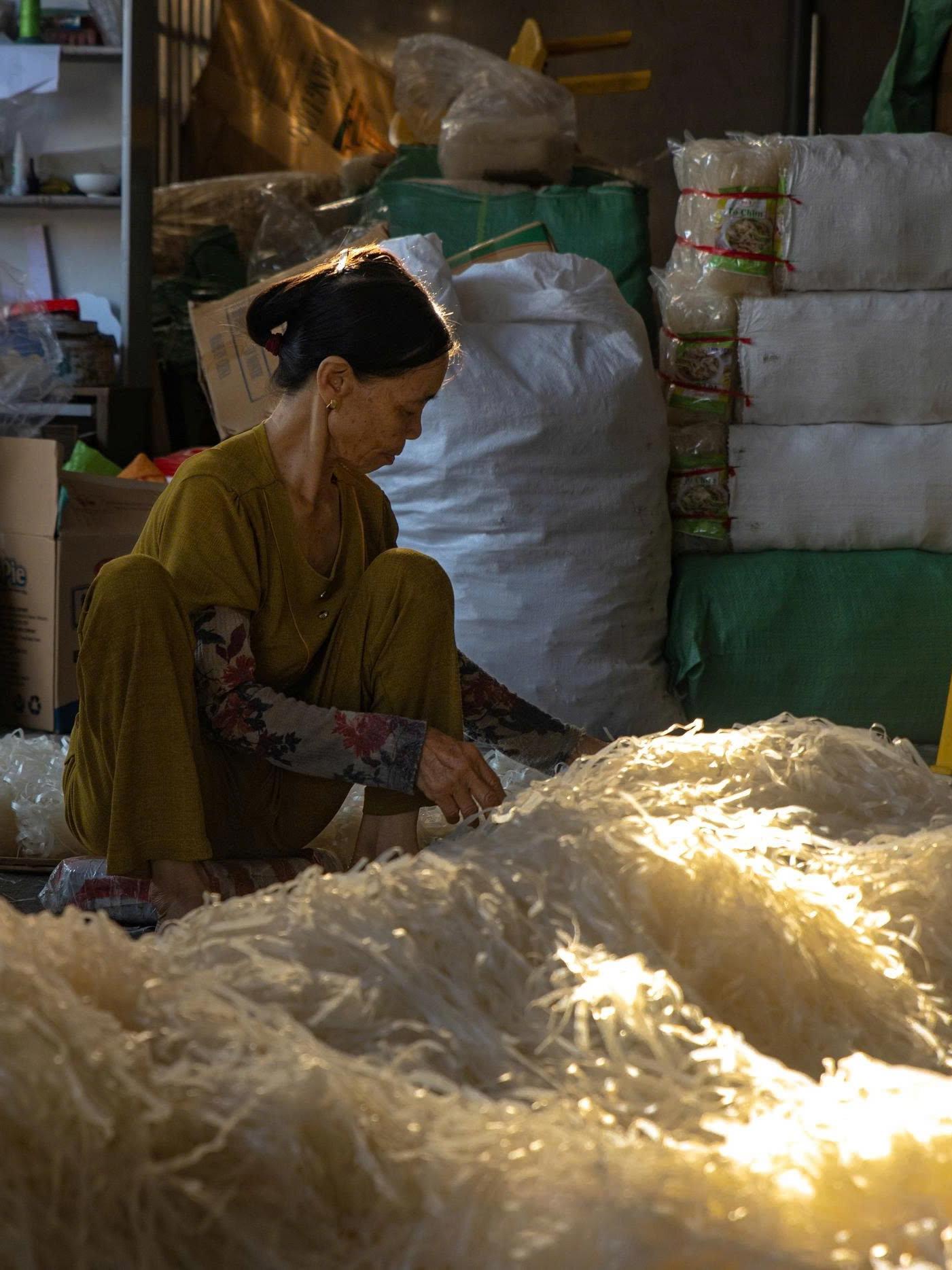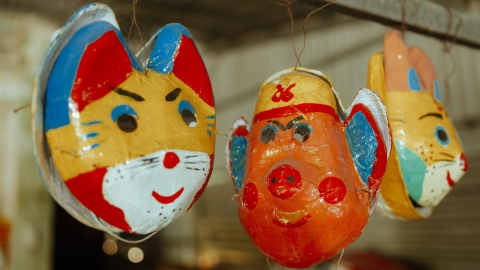"Our homeland is rice paper, rice cake, where the grass is fragrant, the fields are green, the fruits are sweet" - the lyrics in the song "Back to the Homeland" by musician Pho Duc Phuong seem to depict the image of Du Dai village, Dong Hai commune, Thai Binh province in the past. Now part of Quynh An commune, Hung Yen province, Du Dai is a traditional rice paper making village that is more than half a century old.
As a son of the old Thai Binh land, photographer Nguyen Trong Cung returned to Du Dai village on a summer morning. His lens captured the bustling rhythm of life in the craft village, where the early morning sunlight shone through the cake drying racks, where each piece of cake was like a small map, depicting the life of a rural area.
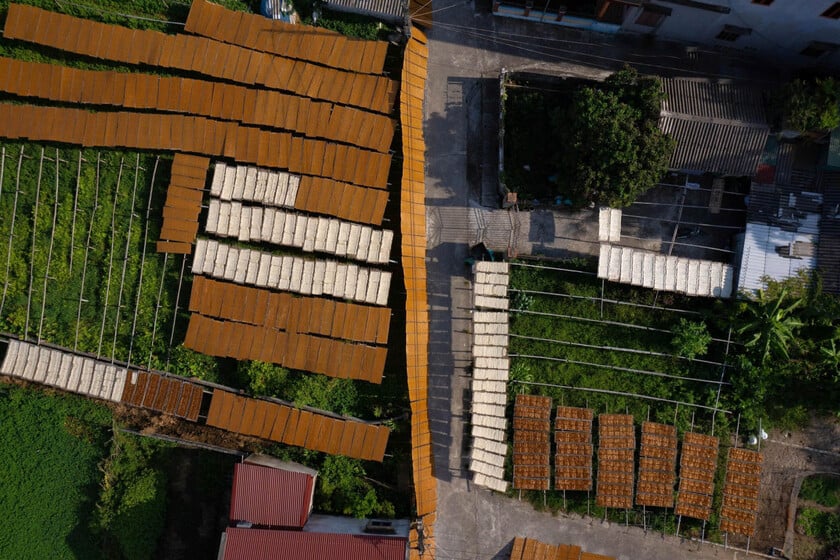
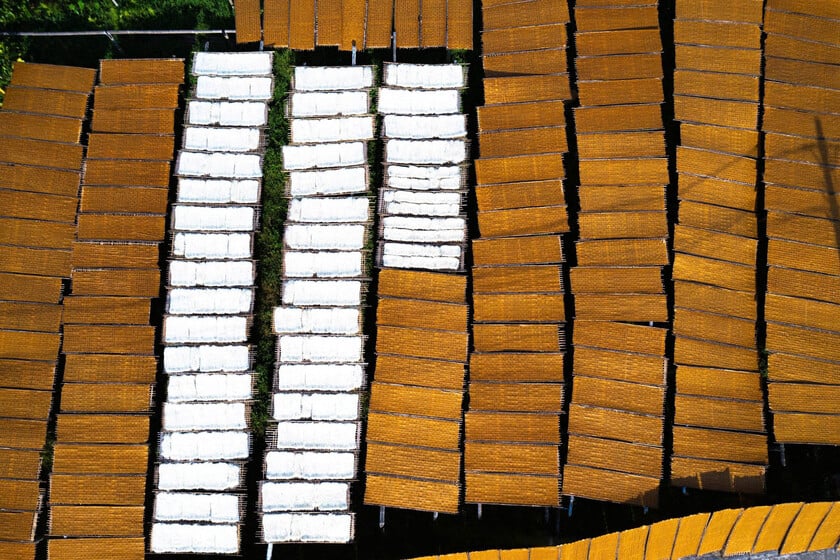

Roads covered with rice paper in Du Dai village
Soul from rice flour and fire
Du Dai village started making rice paper in the 1960s, initially only producing on a small scale, serving families or at rural markets. Over time, the demand for supply gradually increased, many households have been attached for a long time and expanded the scale of production. Up to now, the whole commune has 141 households doing the job, Du Dai village alone has 53 production lines operating regularly, becoming one of the rare bright spots of the traditional Northern profession that still maintains a steady rhythm of the profession.


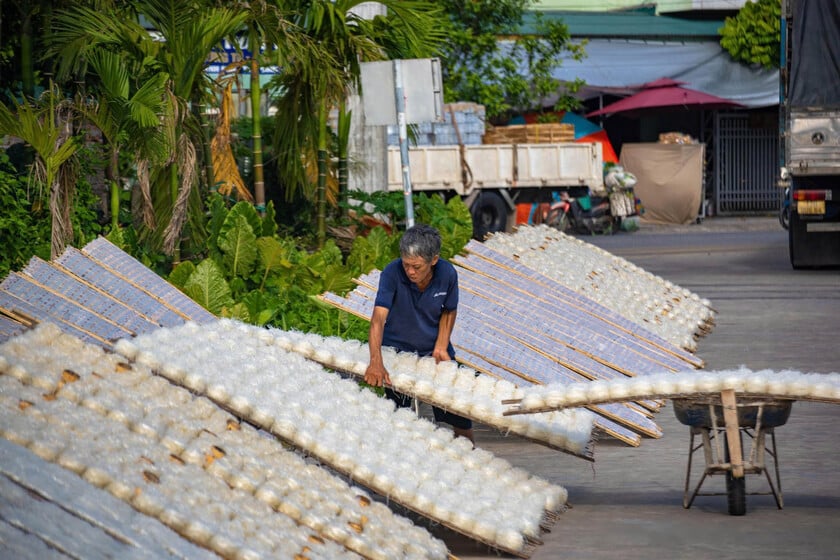
Du Dai rice paper village is one of the rare craft villages in the North that still maintains a steady craft rhythm.
In the flow of technological transformation in the Northern Delta countryside, modern machines have intervened in some stages such as coating, drying, and packaging, but the soul of the profession still lies in human hands.
The cake is handmade from fragrant rice, soaked, ground with a stone mortar, spread thinly and dried in the sun. After that, the worker thins it once more and cuts it into thin strips of about 0.3 cm. The cakes are made from pure rice, without additives or colorants, baked with charcoal, with a fragrance reminiscent of old kitchens. It is this simplicity that creates the irreplaceable identity of Du Dai rice paper.
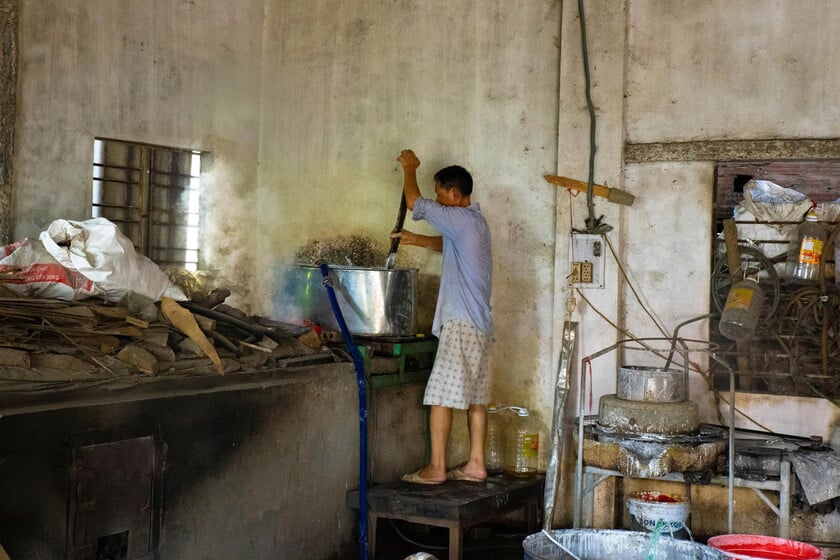
Nowadays, despite the support of modern technology machines, the stages that create the soul of Du Dai rice paper still lie in human hands.
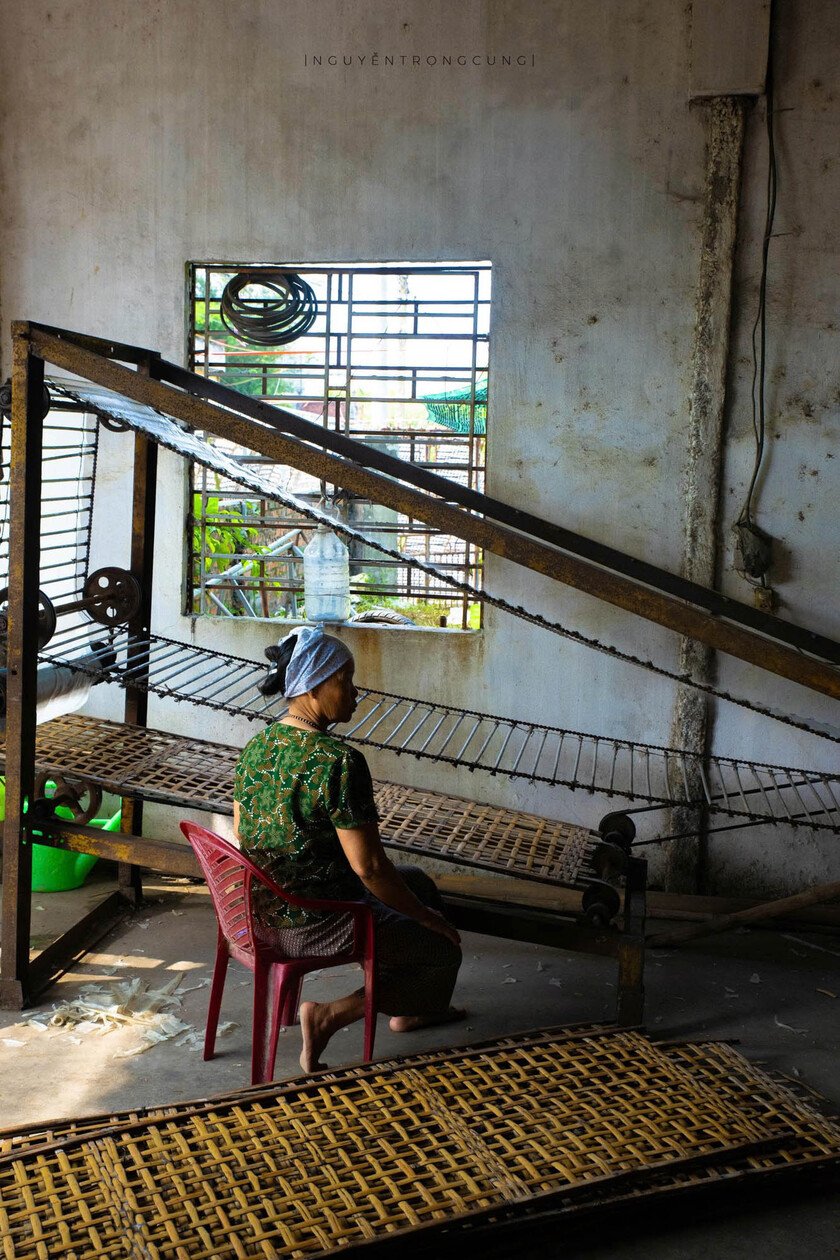
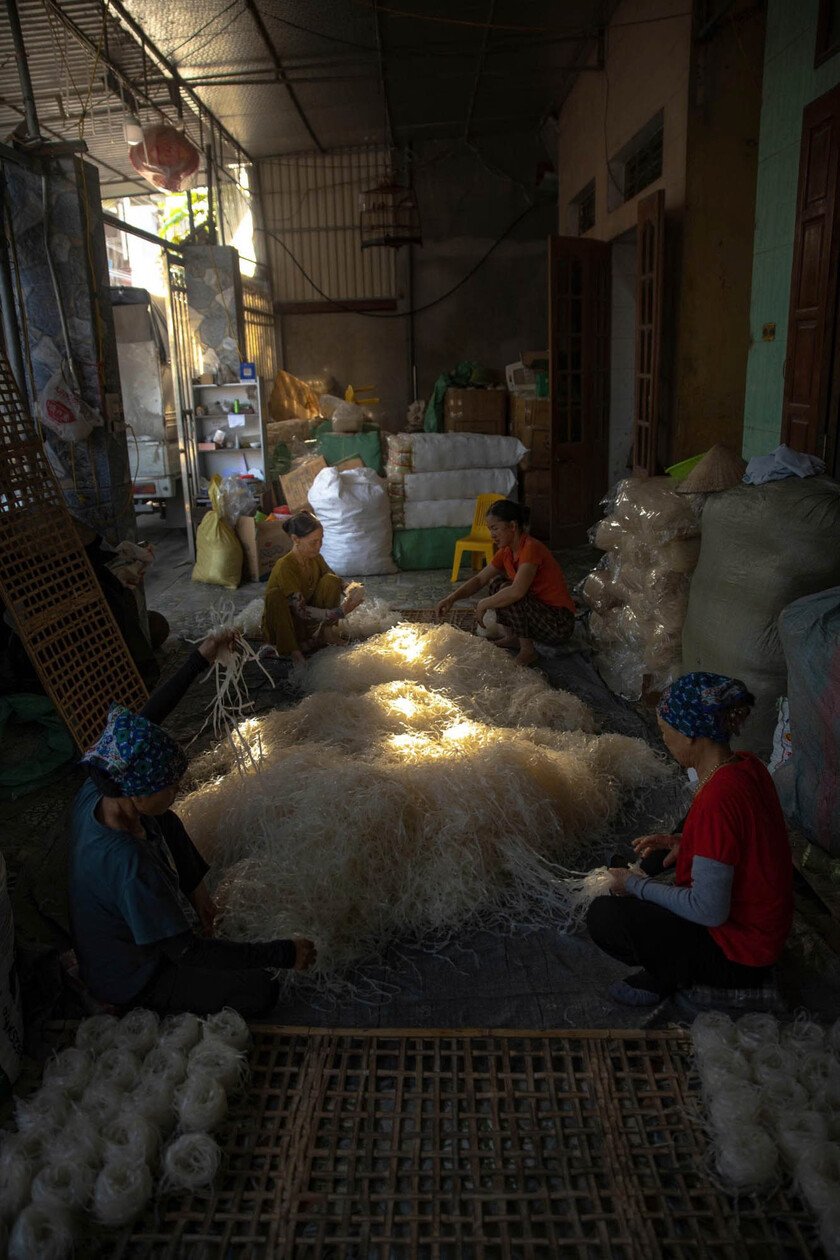
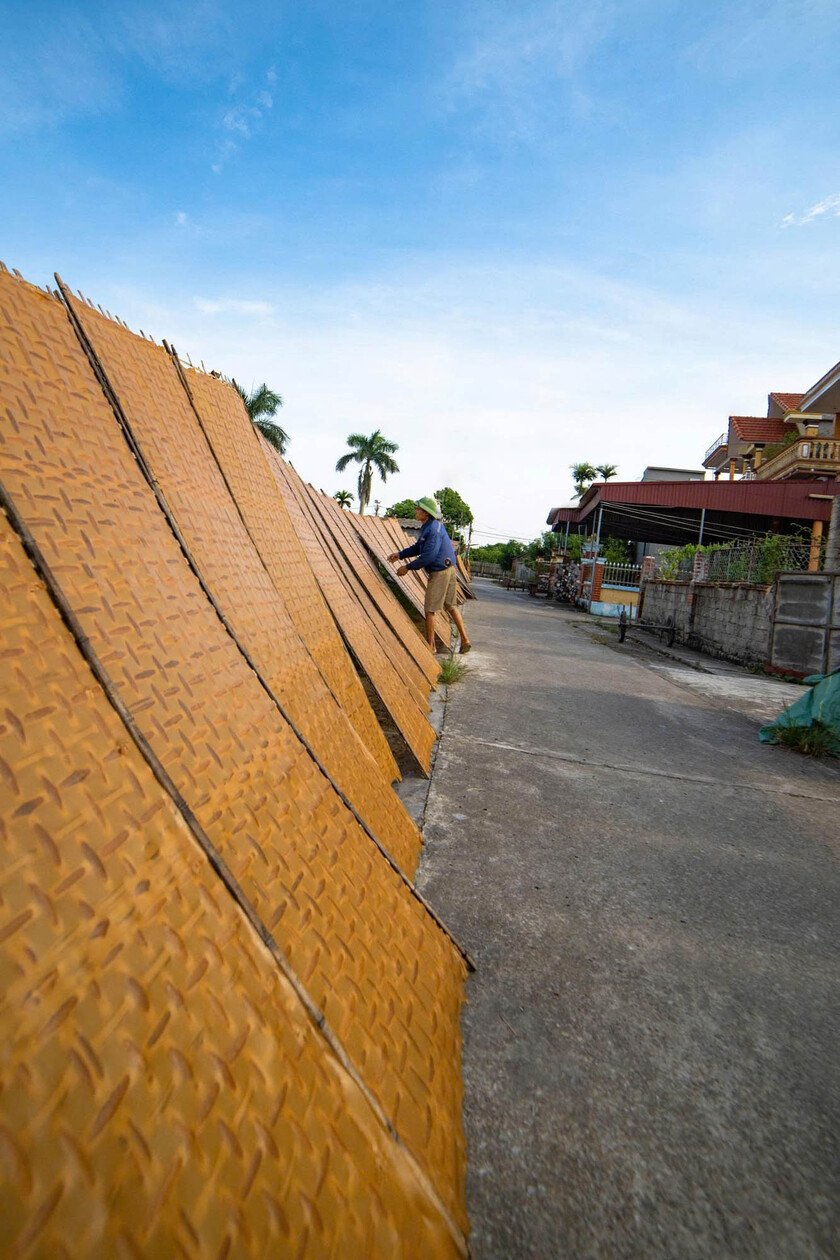
Flavors associated with childhood
Du Dai rice paper is an indispensable ingredient in the famous Quynh Coi fish soup of ancient Thai Binh. When cooked, the rice paper turns from clear white to pure white, both soft and chewy and slightly crispy, maintaining its toughness without becoming mushy or broken when eaten. When poured into a bowl of perch soup with broth simmered from bones, the rice paper absorbs the sweetness and aroma of the rice, creating an absolute harmony between the taste of fish meat, broth and rice paper, making the dish richer and more unique, described by NAG Nguyen Trong Cung.
Du Dai rice paper is not only a processing ingredient but also the pride of the traditional craft of the people of Dong Hai, old Quynh Phu. "Each strand of rice paper, though fragile, contains the passion, memories and flavor of the rice fields, contributing to keeping the soul of Quynh Coi fish soup original and living forever," Mr. Cung shared.
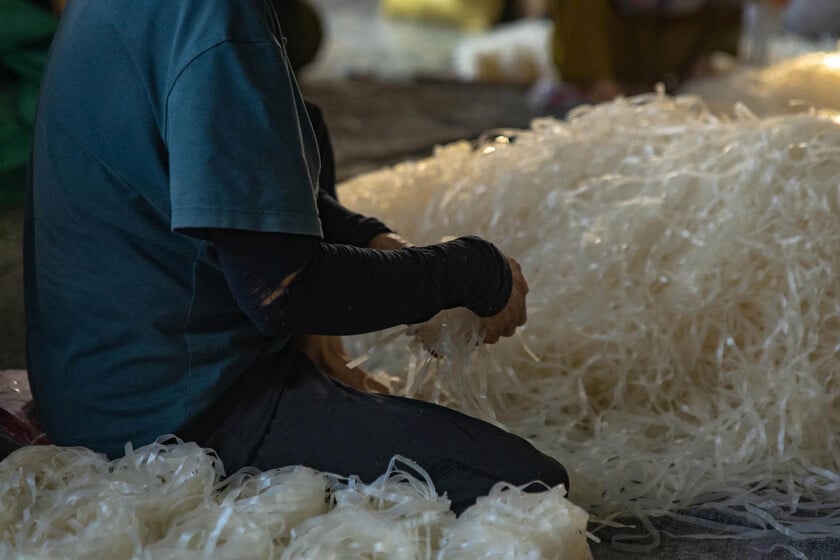
Du Dai rice noodles contribute to the flavor of Quynh Coi fish soup specialty.
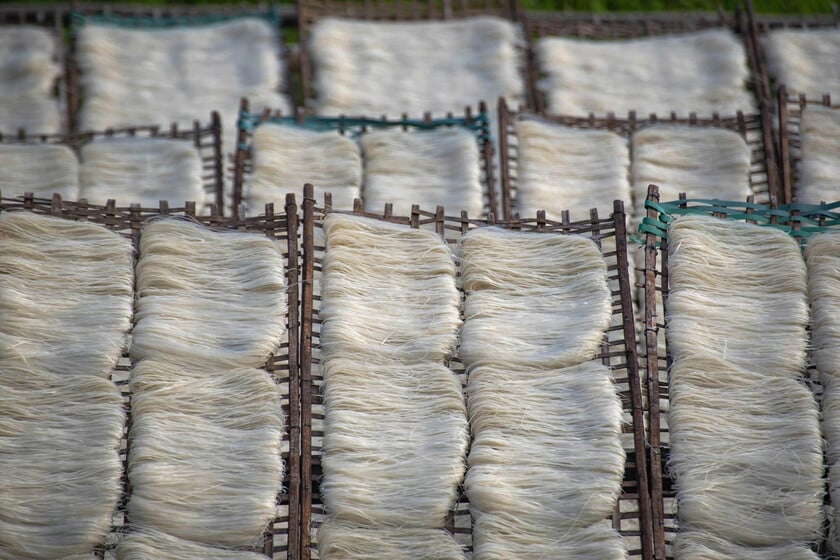
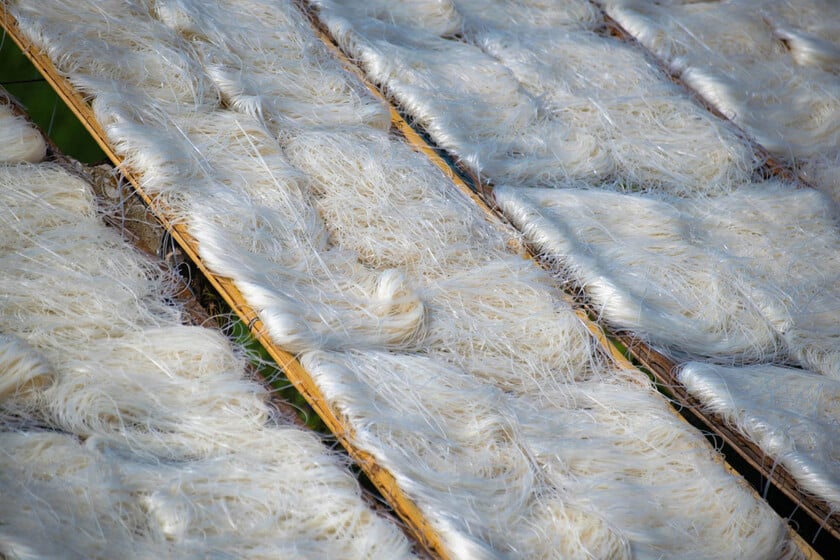
Mornings in Du Dai are when the craft village appears most clearly. From the small alleys, the light aroma of rice flour wafts in, the hum of the milling machine becomes a familiar sound at the beginning of the day. By the fence, newly made rice paper trays are tilted and lined up to dry, catching the sun.
This is where children grow up next to the rice paper drying racks, the elderly still make rice paper with steady hands, and middle-aged women become the pillars that maintain the rhythm of the craft through each stage. Each roof is a fulcrum, where rice paper is not only made, but also passed down.
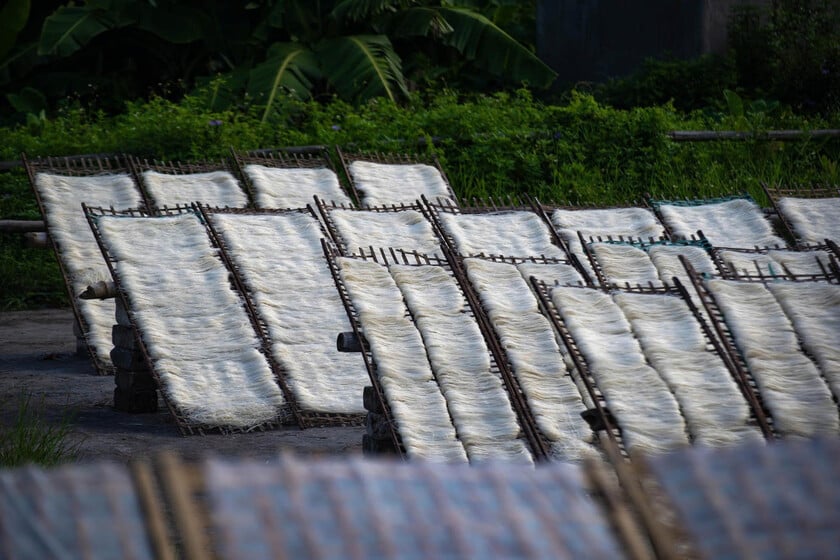


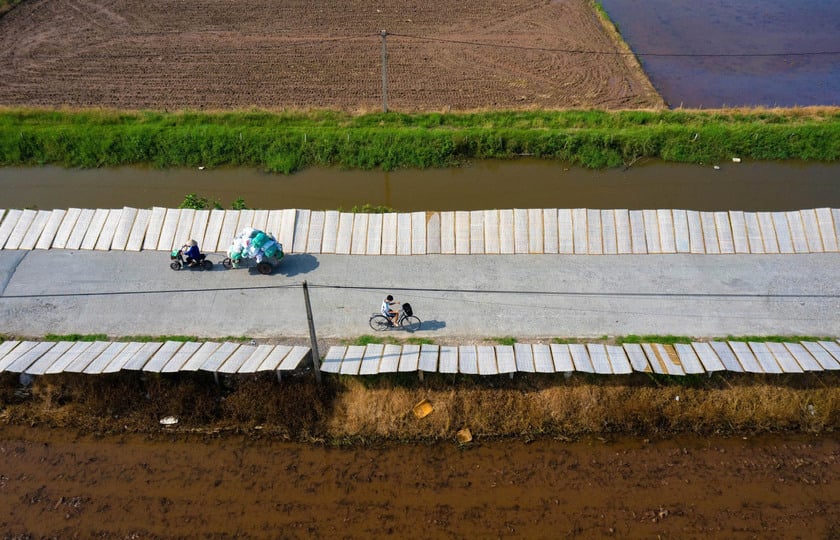
The fragrant white rice cakes are associated with the childhood memories of the people of Du Dai village.
Memories of the busy harvest seasons
Just as rice in the fields has its harvest season, the rice paper making industry also has its own season. The last months of the year are the time when Du Dai has its big harvest, when orders from provinces and cities pour in to serve the Tet holiday. The whole village seems to join in the same wheel around the mills covered with white rice flour, the red-hot stove, and the yard full of new batches of rice paper drying. "Going to the village to see the uncles and aunts making rice paper, you can see the hard work and hardship of purely manual laborers," said Mr. Cung.
It is not only the season of money, but also the season of memories - the time when everyone remembers the old Tet holiday in the kitchen, the long journeys of trucks full of goods, and the village festivals when rice paper is considered a gift from the countryside brought to the big market.
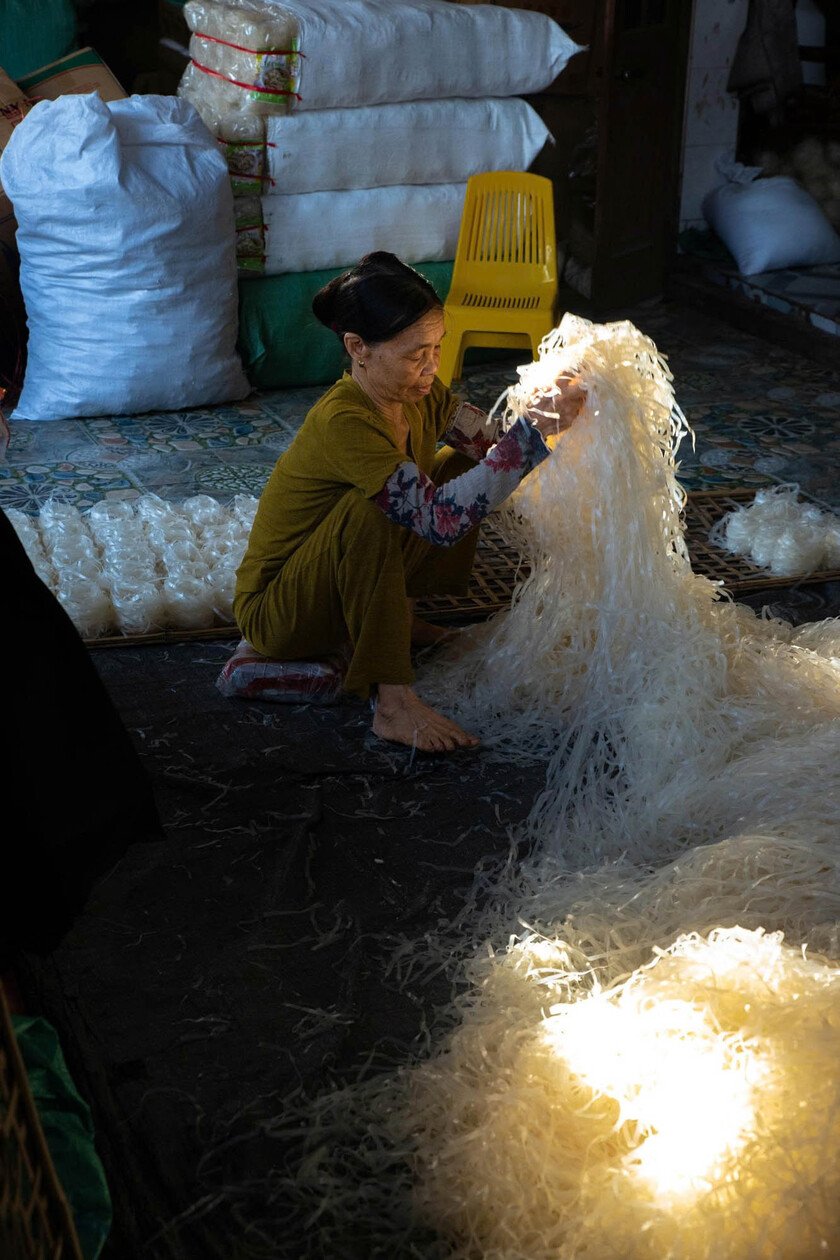

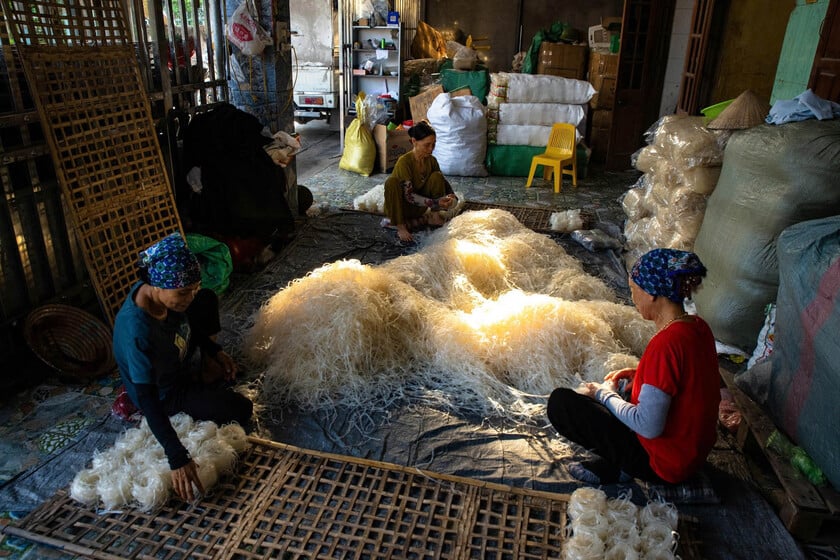
Making rice paper also has a season like farming. The end of the year is the time when the whole village is busy making rice paper.
Despite facing pressure from technology, young workers leaving the village or changing consumer tastes, the rice paper making profession in Du Dai still maintains its position. Many households have boldly invested in modern dryers and electric ovens to produce year-round, ensuring hygiene while meeting new market requirements. Some establishments have put their products on e-commerce platforms (Tiki, Lazada, Shopee) and consumed them at supermarkets and consumer fairs. Du Dai's Quynh Coi rice paper brand has also been certified as a 4-star OCOP product since 2020 and has invested and focused on improving packaging and promoting the brand.
From craft villages to experiential spaces
Not only production, Du Dai today also opens its heart to tourists with activities to experience making rice paper. Tourists can soak rice, make rice paper, dry and bake rice paper right on the spot. These are steps that are familiar to villagers, but for urban people, they are new and attractive.
The simplicity of the village is its advantage. Without the need for a dazzling "check-in" drying yard or a grand eco-tourism area, Du Dai still attracts visitors with the aroma of freshly baked bread, with the stories of the village craftsmen, and with the quiet yet cohesive working atmosphere.
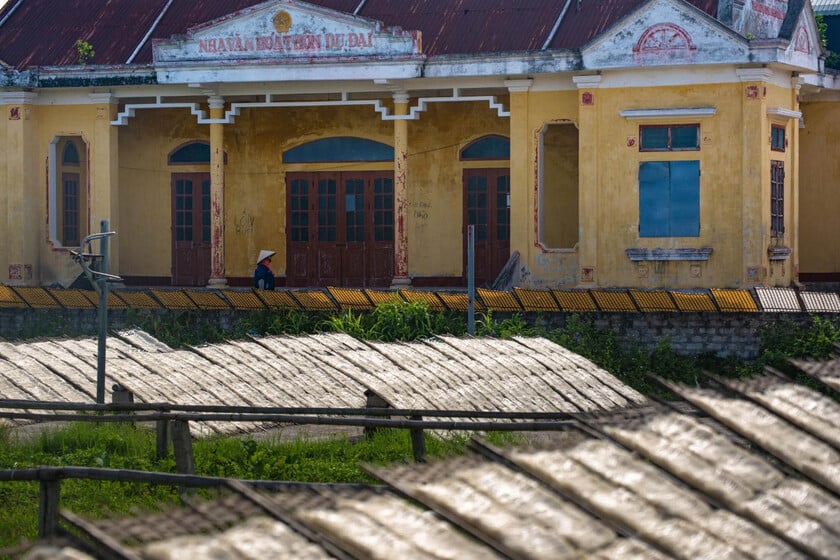
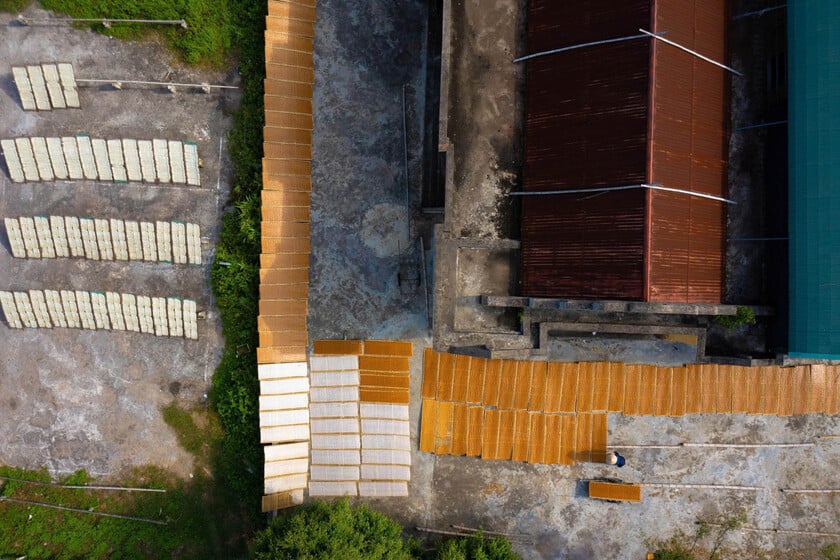
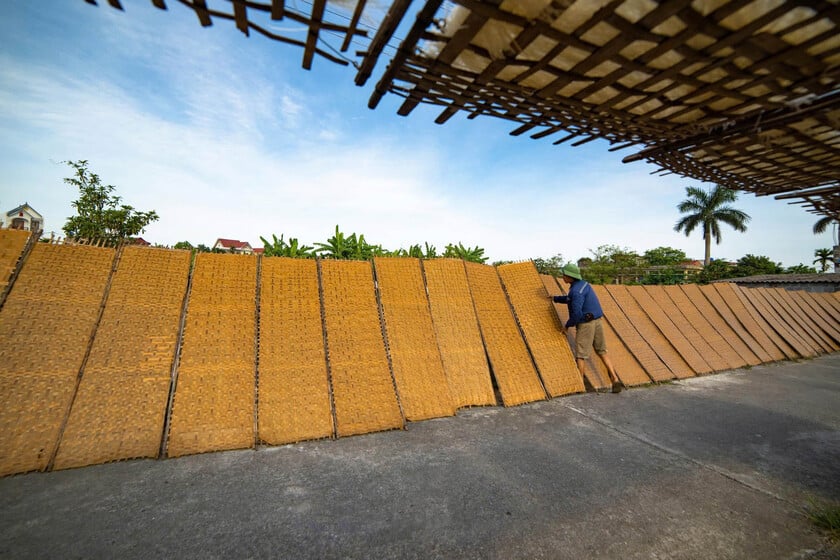
No need for a brilliant check-in area, the appeal of Du Dai rice paper village comes from the simplicity, rusticity and silent attachment to the profession of the villagers.
With a location not far from the center of the old Quynh Phu district and close to spiritual destinations such as Keo Pagoda, Dong Bang Temple, Du Dai has many advantages to develop a tourism model combining craft villages in short-day tours. This place can completely become an emotional stop for those who want to understand more deeply about the rural life of the North, not only through the lens, but also through the sense of smell, taste and direct contact with the rhythm of working life.

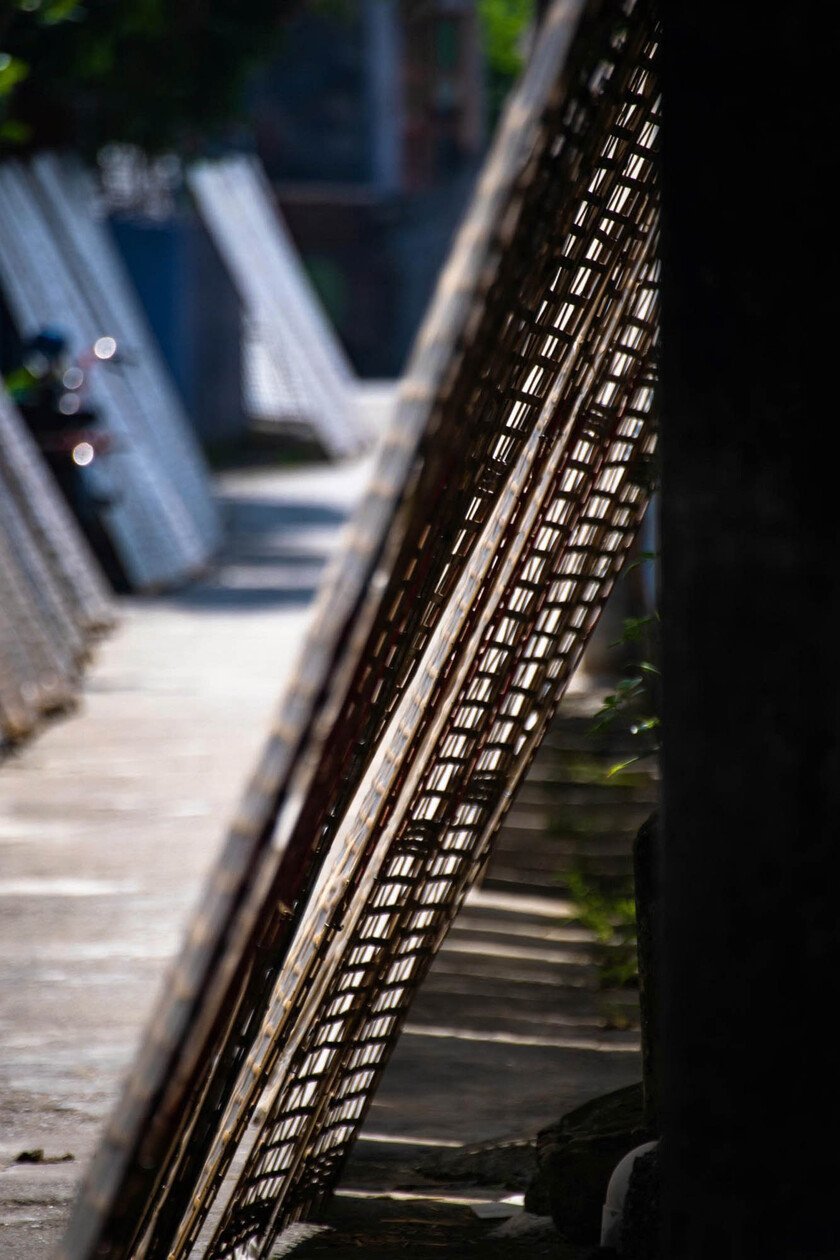
Nguyen Trong Cung chose Du Dai to tell a part of the memories of the old Thai Binh countryside. But perhaps, every person who comes here, whether holding a camera or not, can keep for themselves a piece of memory: that is when the sunlight shines through the fragrant rice cakes, the laughter of the old craftsman beside the red-hot coal stove, the smell of new rice floating in the warm space. A very small slice, but enough for people to remember forever a village that has never stopped burning to preserve the profession.





